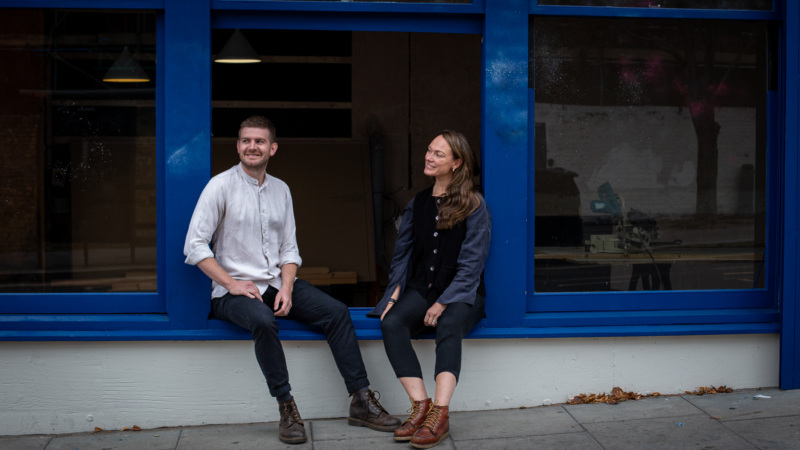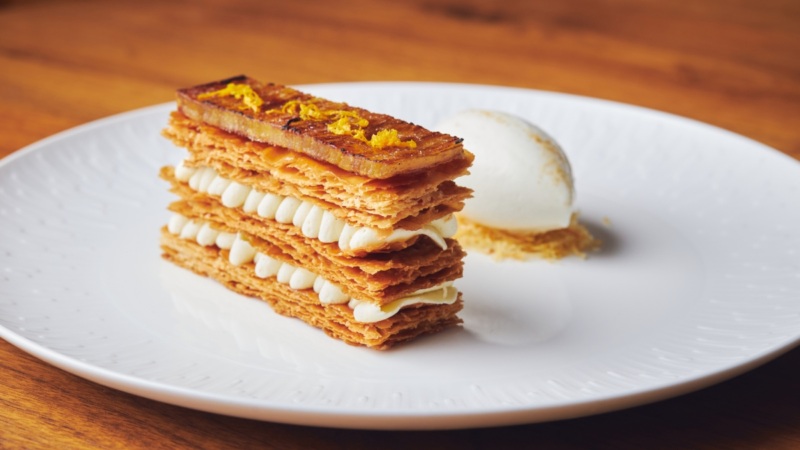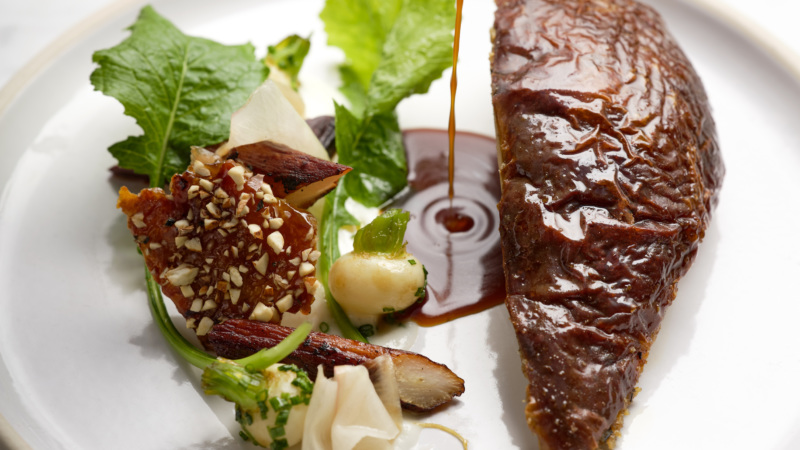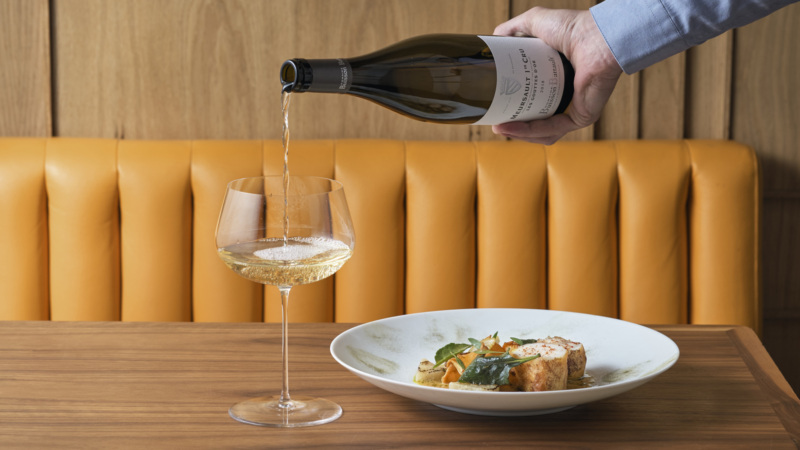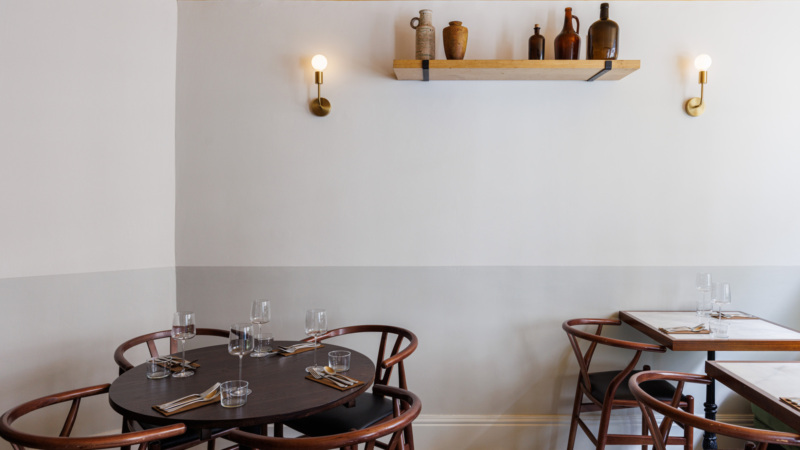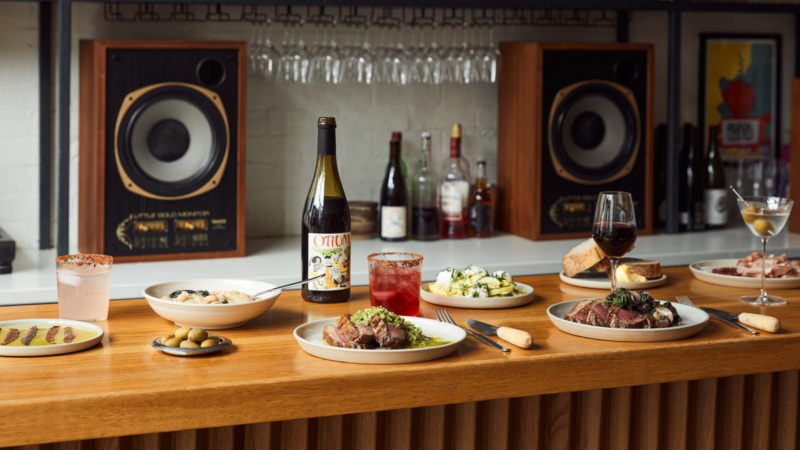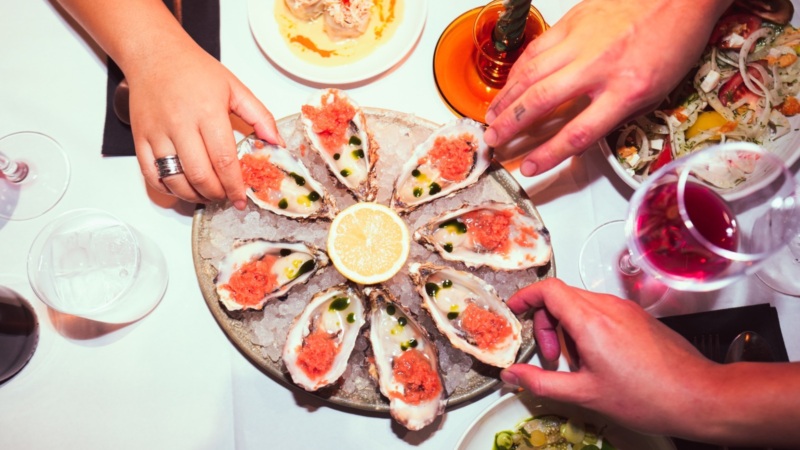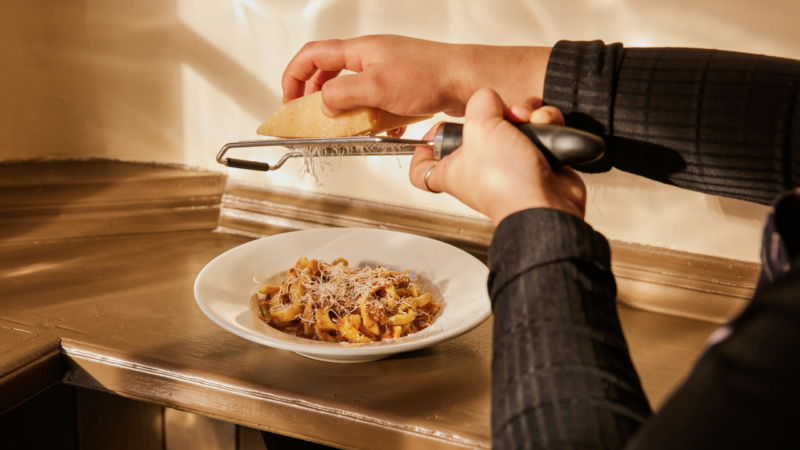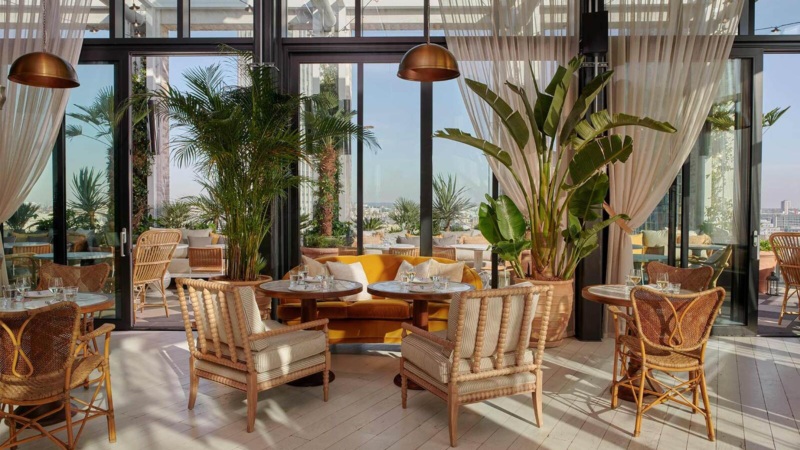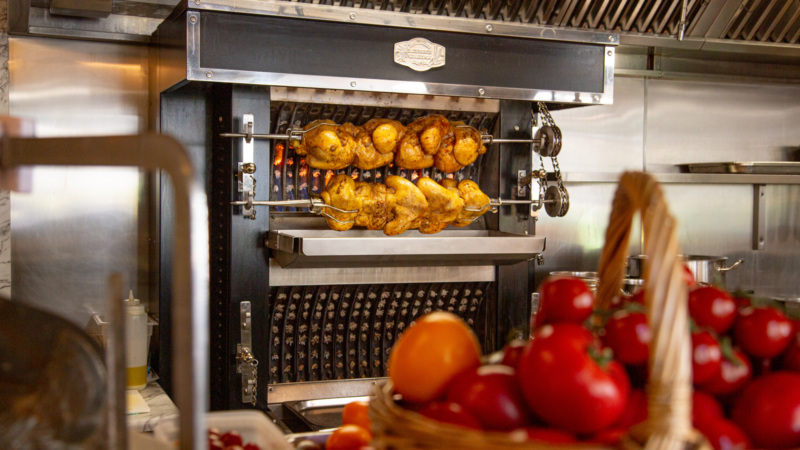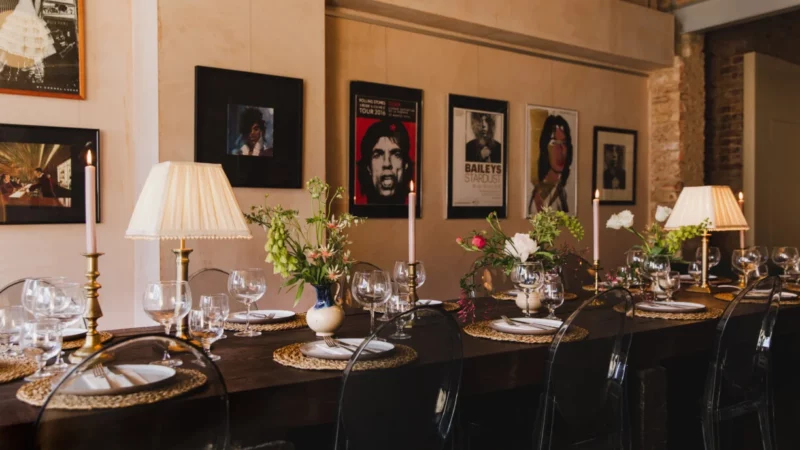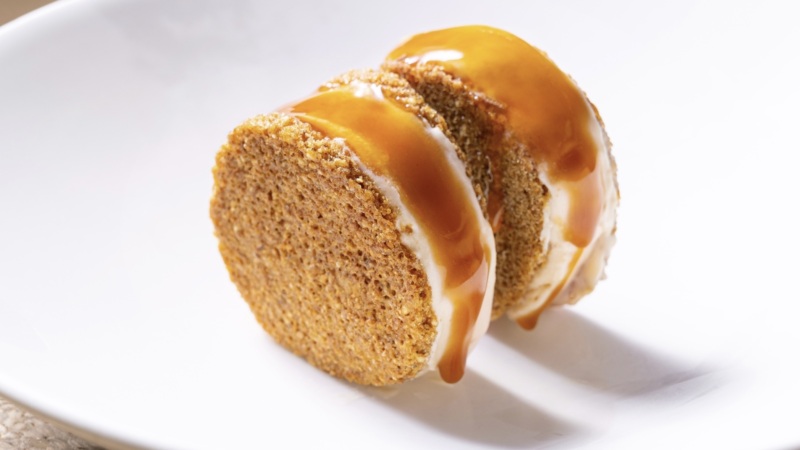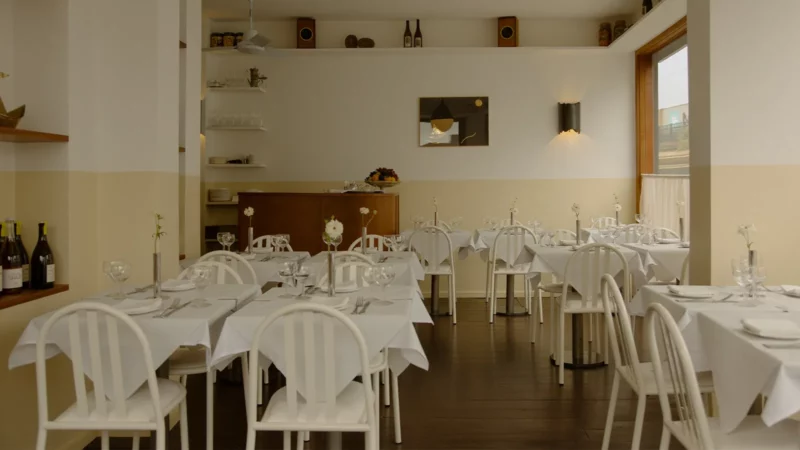
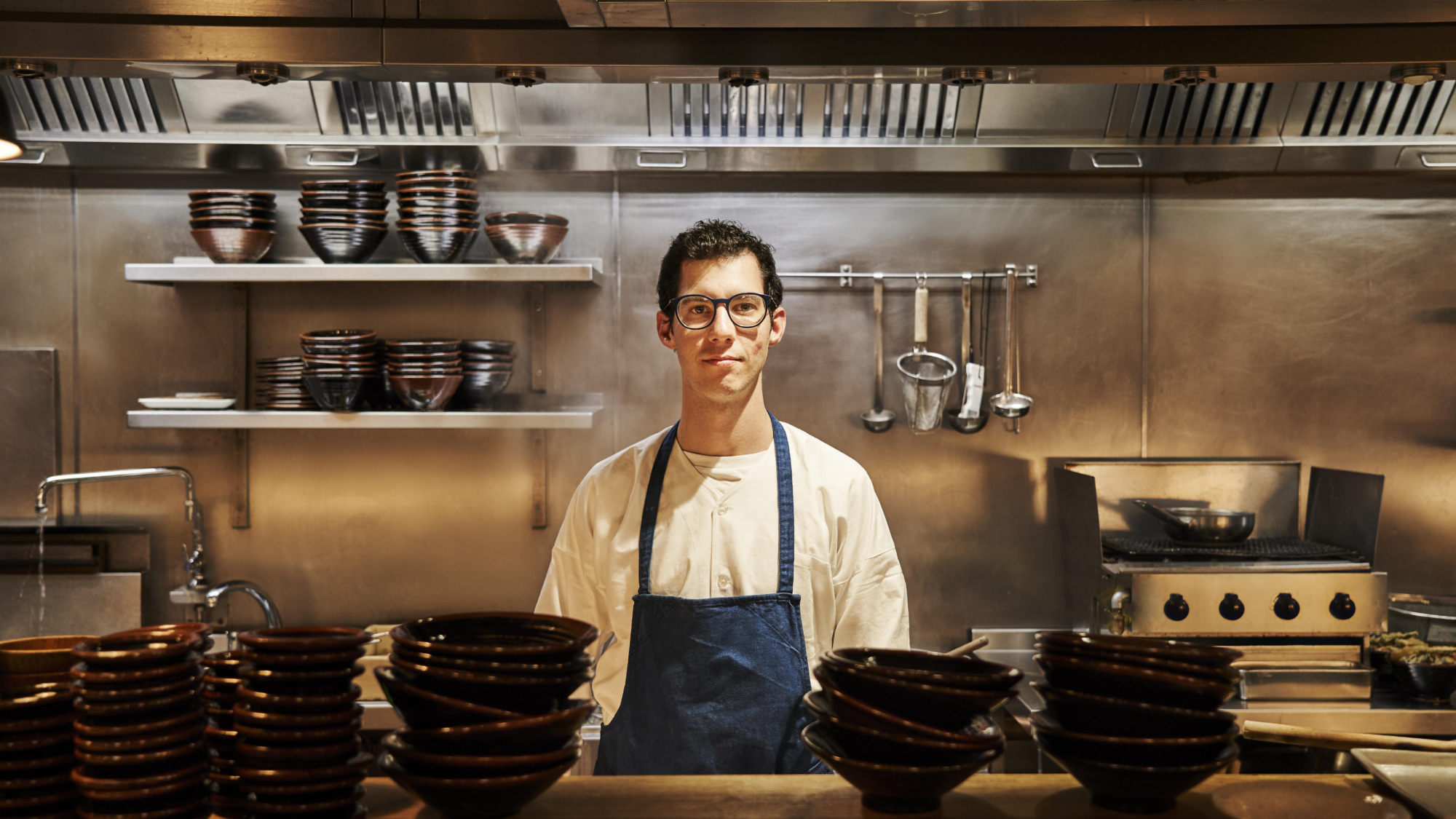
Udon By Way of Porto: At Koya City, Gustavo Tavares Reimagines Japanese Cuisine
For Gustavo Tavares, head chef of Koya City, cooking is laced with both tradition and invention.
While Tavares remains faithful to the heart and soul of Koya as a Japanese udon noodle bar, he plans to put his own mark on the food at Koya City – differentiating it from the two other Koya branches – by introducing distinct Portuguese influences. From the sweet and sour amalgamation of escabeche to balancing the saltiness of miso with the fizziness of fermented red pepper, Tavares presents an inventive blend of Japanese cuisine with traditional Portuguese flavours.

Tavares is 28, with horn-rimmed glasses, curious eyes, and a warm, friendly character. Once he’s behind the counters, he transforms into a more serious presence, where his discipline and organisation are put on display as he serves bowls and bowls of udon, made by hand fresh each day.
After finishing cooking school in Portugal, Gustavo Tavares left Porto to begin life as a chef at a Michelin-starred restaurant in Barcelona back in 2013. Following his one-year stint at Caelis – where he learned the ins and outs of life in the kitchen – he joined the team that opened Taberna do Mercado under the leadership of chef Nuno Mendes.
But throughout his time navigating European flavours in his early career, Tavares admits to always having felt a magnetic pull towards Japanese cuisine.
Eventually, he made his way to Koya, London’s renowned Japanese udon bar founded in 2010 by Japanese chefs Shuko Oda and Junya Yamasaki, along with restaurateur John Devitt.
Six months after joining Koya’s Soho restaurant, Tavares was offered to take on Koya City as head chef – one of the busiest branches situated in Bloomberg Arcade. Tavares explains that the ambience, energy and pace is significantly different between both branches. Koya Soho, which can only seat 23 people at a time, often carves out a more relaxed dining experience in contrast to the speed and consistency demanded from Koya City during weekdays between the hours of 12:00 and 2:30 p.m.
“My specials don’t need to be as obvious in the sense of ‘this is Portuguese’ or ‘this is Japanese’ – it’s about finding the link in between.”
His changing menu of specials features Koya’s signature flavours and techniques filtered through his Portuguese lens.
“I like fish and working with fish,” says Tavares, pointing to the current lineup of specials displayed on the glass windows for passersby to see, along with a restaurant lined with people. The red mullet tempura topped with blood orange ketchup – a strong addition to Koya’s repertoire of tempura – packs a wide range of savoury flavours. His sea bream sashimi sprinkled with wild garlic and nori powder is a colourful display of ingredients that perfectly underscore the clean and delicate taste of the fresh fish.
“My specials don’t need to be as obvious in the sense of ‘this is Portuguese’ or ‘this is Japanese’ – it’s about finding the link in between,” he says. “Sometimes, it can be subtle or it can be more obvious.”
Navigating through two cuisines, Tavares describes his approach as trying to find the same result but through different methods. “I learned what Koya was really about,” he shares. “It’s not about being fancy on the specials – it’s always about the flavours.”
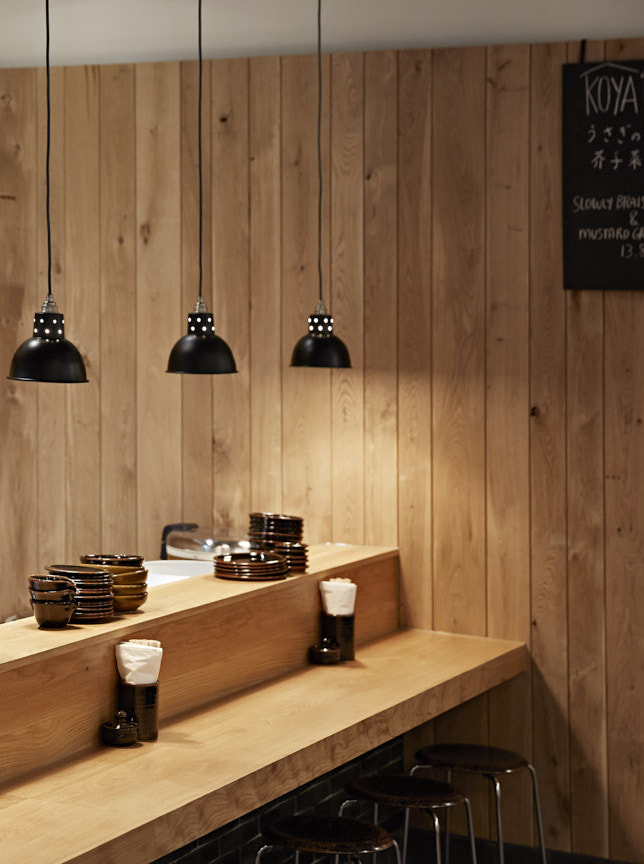
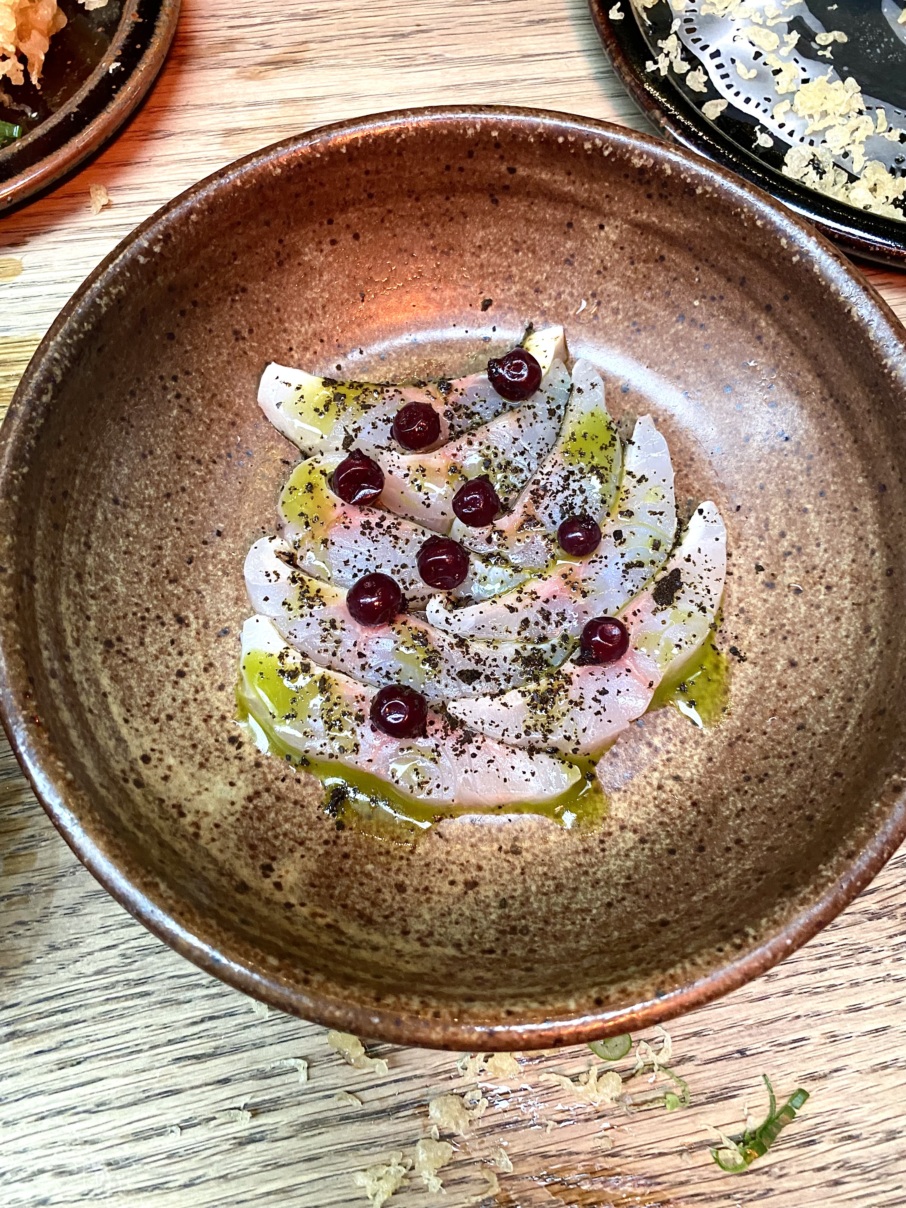
▪️
There are many layers to Tavares’ identity that are felt and drawn out when you taste his food. His dishes like stuffed braised squid or pig trotter udon mirror his nostalgia for his home in Portugal while highlighting the diverse cultures and progressive techniques he has learned and experienced in his culinary career.
When asked about what Tavares distinctly brings to the wooden counters of the City branch, Koya co-founder Shuko Oda jokes, “A lot of coriander.” More seriously, Oda points out how Tavares has an artistic yet simple way of putting a dish together or reinterpreting and evolving a dish he has eaten elsewhere. “I think his strong suit is in his creativity and sensibility, and it really comes through in the specials.”
Oda also highlights that Tavares’ way of working served as inspiration for a number of collaborations where chefs are brought in to work with him on an exclusive menu, usually available for one night only. “City is the perfect place to do it and he is the perfect chef for it,” says Oda.
One of the previous guest chefs includes Leandro Carreira, executive chef at The Sea, The Sea. “[Gustavo] has [an] incredible dynamic as a chef,” says Carreira. “He plays with textures and the depth of flavours that merge so well with Koya.”
Looking back on his experience working together with Tavares for a six-course tasting menu at Koya, Carreira shared that they always managed to produce something new, exciting, and incredibly tasty with traces of Portuguese cuisine. In the coming months, Tavares hopes to bring back a similar spirit of collaboration to Koya, similar to his one-off evening with Carreira – citing his former mentor Nuno Mendes (now of Lisboeta in Fitzrovia) as his next dream partner for a unique dining experience.
When asked what he hopes to introduce next to Koya, he momentarily thinks deeply: “Bread!” he laughs, revealing his longing for the Portuguese table staple. “But I think that’s too out there, so maybe cured meat with miso or koji.”
Although there are many variables that Tavares considers when developing his menu – such as seasonality, weather, and the mood London finds itself in – he admits that he is ultimately ruled by intuition. As he puts it: “It’s a lot of gut feeling.”
Koya City is open Monday to Saturday, 11.30am to 10.30pm, Sunday 11.30am to 9.30pm. Book here.
Juli Suazo is a freelance writer based in London.

